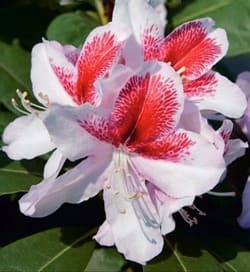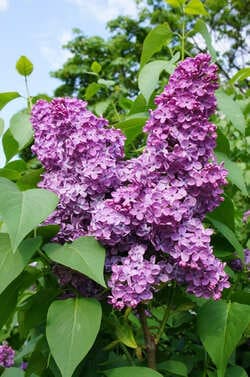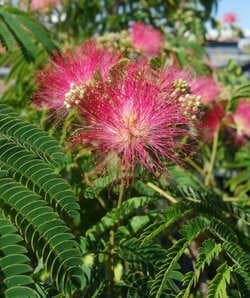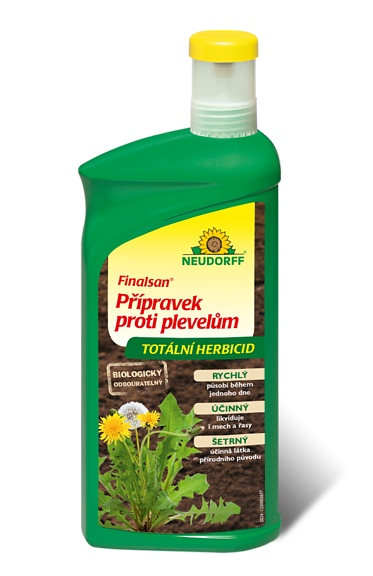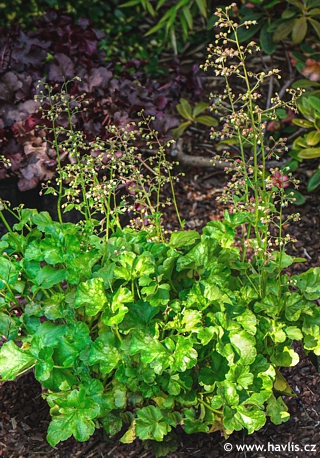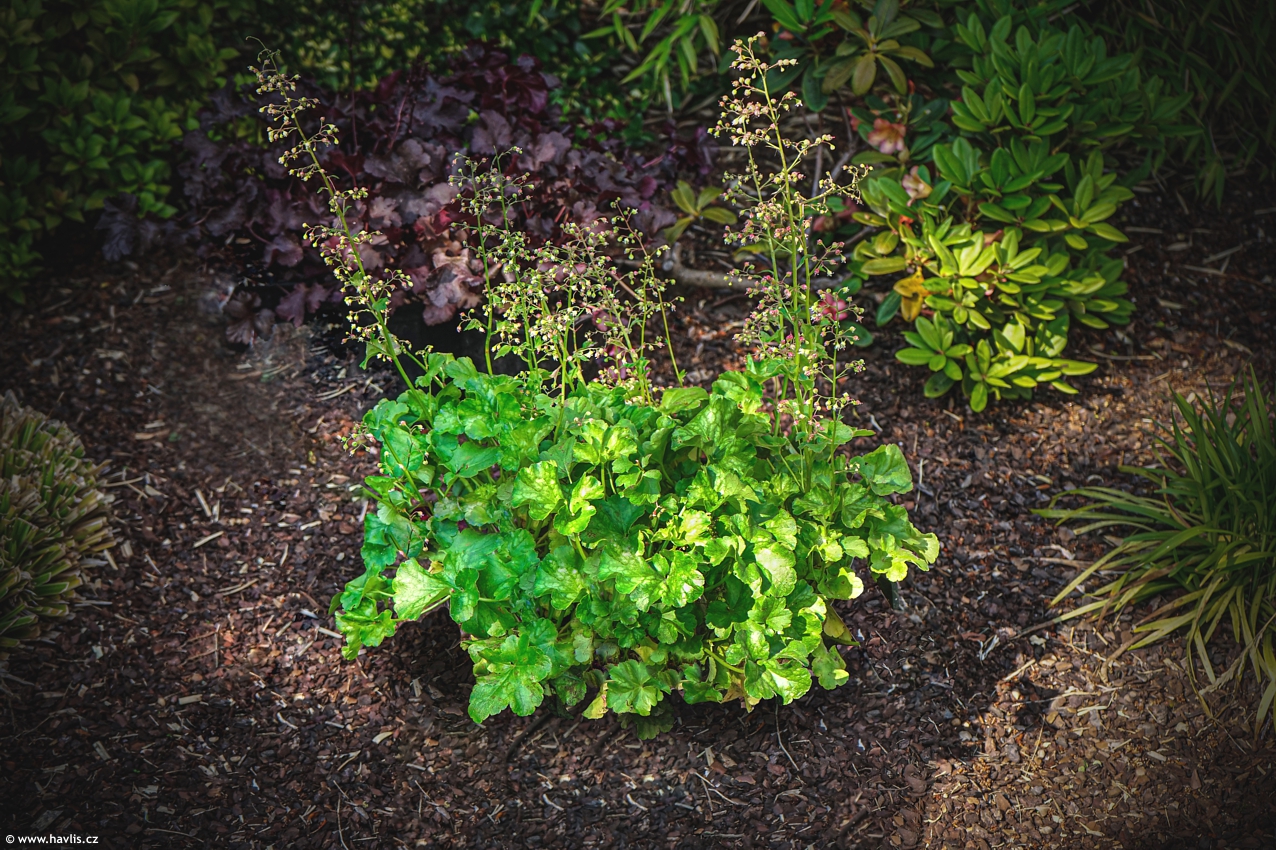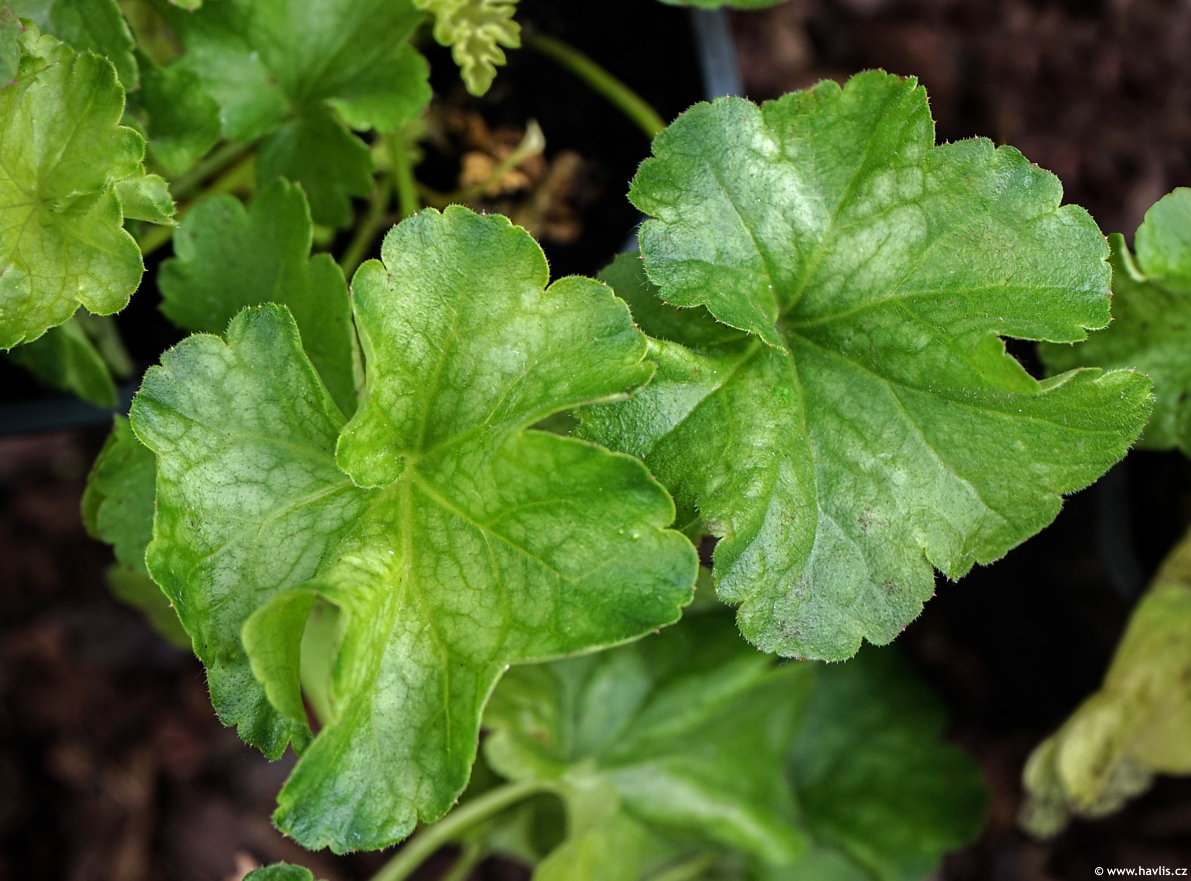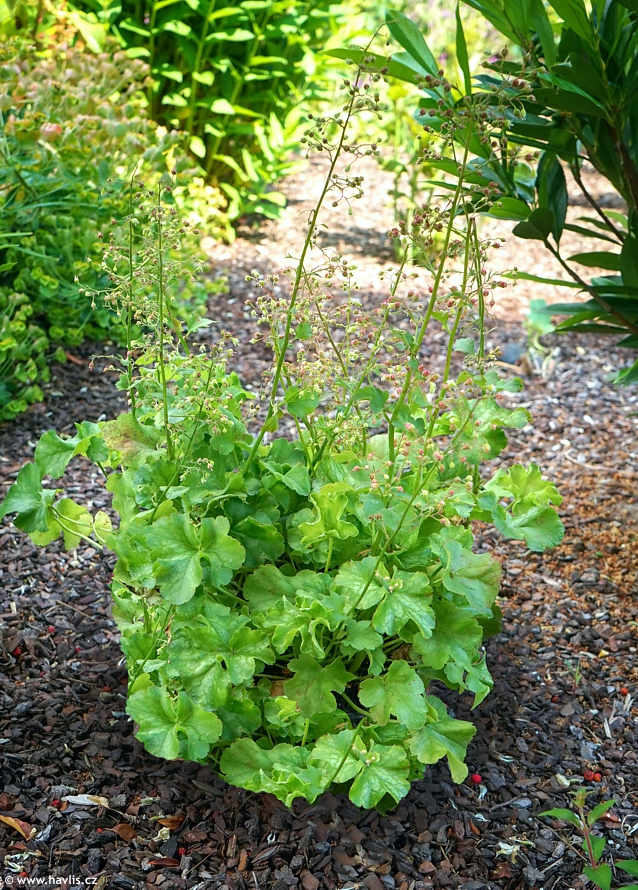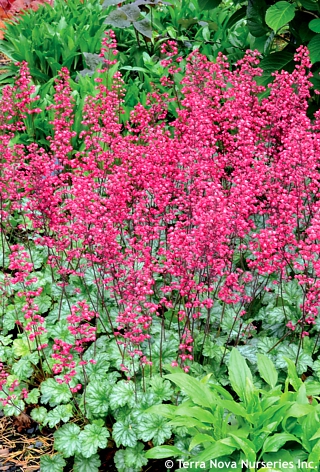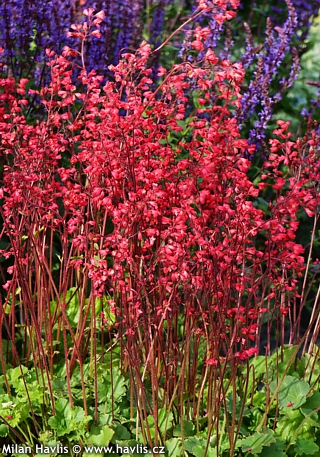Heuchera 'GREENBERRY' coral bells
Heuchera
Heucheras – coral bells – are low-maintenance yet striking perennials that have gained popularity for their beautiful foliage and delicate flowers, sometimes appearing in abundant inflorescences. They form dense clumps of leaves, boasting an astonishing range of colors. The botanical genus Heuchera was named after Johann Heinrich von Heucher (1677–1746), a German physician and professor. There are approximately 37 species but classifying them is quite tricky – plants hybridize freely, and their flowers significantly change shape as they mature. No wonder so many breeders are fascinated by them - it’s simply thrilling to experiment with their dynamic gene pool and eagerly await to see what new marvel appears at the end of each attempt. 😊
A demanding breeder
Jelle van den Haak from the Netherlands is one of those enthusiastic breeders who has fallen in love not only with heucheras but also with many other perennials. He is the almighty guru who has developed the utterly awesome Sunseekers series of echinaceas, which feature absolutely stunning colors. He follows a similar approach with his Indian Summer series of heucheras, naming newly acquired varieties after different edible berries or anything fruit-related that their leaf colours resemble. So far, the lineup includes Mulberry, Orangeberry, Huckleberry, Gojiberry, Boysenberry, Coralberry, Cherryberry, Splashberry, and Greenberry. So now what, wanna try one?
Dlužicha Greenberry is another coral bells variety from the Berry series named after various types of fruit or foodstuff. Greenberry is a name for a South American plant from the solanum family, which produces small berries with bright green skin, however, this heuchera is not edible, its leaves only have the colour of the fruit. They are palmately lobed, slightly undulated, light green with pale silvery-green marbling. From early summer rise about 30 cm long, green stems with many raspberry-red flowers. It grows moderately into a dense tuft.
Coral bells can take almost any soil with ample moisture and good drainage. They do best in partial shade or filtered sun, however, if you make sure they will not dry out you can place them in full sun, too. They can also live in dark shade where their colours will not be too rich, such location is usually best for pale-coloured varieties. Cut off all leaves in early spring to encourage growth of new foliage. Fully hardy to abt. -34 °C (USDA zone 4), and suitable for outdoor pots.
Last update 05-08-2023












